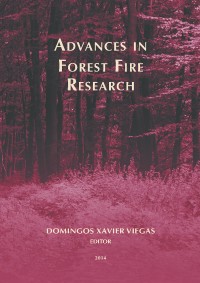Please use this identifier to cite or link to this item:
https://hdl.handle.net/10316.2/34169| Title: | A fire effects index for overall assessment of wildfire events in Greece | Authors: | Kalabokidis, Kostas Palaiologou, Palaiologos Athanasis, Nikolaos |
Keywords: | Wildfire Effects Evaluation;Analytical Hierarchical Process;Fire Index;Greece | Issue Date: | 2014 | Publisher: | Imprensa da Universidade de Coimbra | Journal: | http://hdl.handle.net/10316.2/34013 | Abstract: | Greece is faced with increased wildfire activity on an annual basis. Large-scale wildfires along with limited economic resources do not allow application of rehabilitation measures for the vast majority of burned areas, and when restoration takes place it is not based on sound scientific evidence. A scientific approach is missing based on wildfire classification and overall assessment of fire effects. Severity of a wildfire is perceived by the authorities only from the total area burned. These facts prompted our research thoughts about the need for introducing a new ranking method that will be based on expert judgment, with scientific evaluation of what has happened and what it is expected to occur based on several fire related aspects and parameters. The backbone of our proposed Fire Ranking and Effects Index (FIRE Index) is the Analytical Hierarchical Process (AHP) that is used to combine the scores of seven categories and 56 criteria that comprise them. These categories form two groups of effects: Environmental Fire Effects with three categories (Landscape and Vegetation; General Environment Impacts; Regeneration Potential/Vegetation Recovery); and Socioeconomic Fire Effects with four categories (Casualties and Fatalities; Destructions/Damages on Infrastructure; Economic Losses; Firefighting/Wildfire Confrontation). Each of the 56 criteria, along with four different general multipliers, describes a different anticipated fire effect. The magnitude of the effects is estimated by one or more persons/ assessors in a multi-level evaluation procedure. Then, AHP pair-wise comparisons are applied in two levels, i.e. within the criteria of each category and among the seven categories. Weighted scores of criteria are summed and normalized in a 0-100 scale; and the same procedure is applied on categories to calculate the final FIRE Index value. End-users are thus able to estimate the FIRE Index in a user-friendly, web-based platform that provides all the necessary feedback and literature justification, while conducting all the necessary calculations in the background. | URI: | https://hdl.handle.net/10316.2/34169 | ISBN: | 978-989-26-0884-6 (PDF) | DOI: | 10.14195/978-989-26-0884-6_176 | Rights: | open access |
| Appears in Collections: | Advances in forest fire research |
Files in This Item:
| File | Description | Size | Format | |
|---|---|---|---|---|
| 978-989-26-0884-6_176.pdf | 1.98 MB | Adobe PDF |  |
Items in DSpace are protected by copyright, with all rights reserved, unless otherwise indicated.
